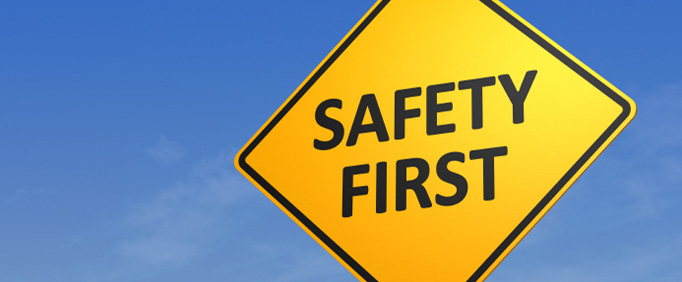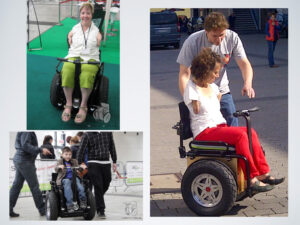
[:it]La fortuna NON E’ un dispositivo di sicurezza.[:en]Luck is not a safety measure[:]
[:it]
Si moltiplicano i mezzi che utilizzano la tecnologia auto bilanciante ad uso delle persone con mobilità ridotta. Questa é sicuramente una conferma che nel mondo c’è la necessità di investire su tecnologie alternative alle sedie a rotelle tradizionali e Genny é stata senza dubbio la prima a percorrere questa strada.
A mio parere, due principali gravi pericoli sono in agguato.
Il primo é senz’altro l’idea di poter acquistare autonomamente una base auto bilanciante qualunque e costruire dei “dispositivi home-made” che permettono in modo non sicuro e in totale pericolo di muoversi.

Questi sono solo due esempi dei numerosi “marchingegni”che si trovano sul web e che non rispettano nessun requisito di sicurezza. In Genny, ci sono voluti anni di lavoro per creare un dispositivo medicale sicuro.
Nel mondo non esistevano e non esistono tutt’oggi linee guida e leggi di riferimento per la costruzione di una sedia a rotelle auto bilanciante, come invece troviamo nell’automotive.
Bisogna rendersi conto che una sedia auto bilanciante, denominata APW (Active Power Wheelchair) ha più cose in comune con un elicottero che con una automobile.
E’ per questo motivo che, in Genny, tutte le sicurezze derivano dall’aeronautica, come ad esempio le ridondanze, le procedure di “atterraggio” in caso di guasto (abbassamento dei piedini), allarmi che coinvolgono i tre sensi, udito, tatto e vista; questo permette di non ignorare i segnali di pericolo.

Il secondo grave rischio é rappresentato dal fatto che le disabilità sono molteplici e differenti l’una dall’altra. E’ chiaro ed evidente che non esiste un mezzo per la mobilità universale. Ciò che è perfetto per un tipo di disabilità può essere mortale per un altro tipo.
Per questo motivo in Genny abbiamo lavorato con il Ministero della Sanità italiano tramite INAIL e il Ministero della Sanità Svizzero, SUVA per creare il Protocollo medico (Medical Guidelines) che permette di districarsi nel complicato mondo della disabilità per capire chi è idoneo all’uso di un APW e chi non lo è.
Capisco che sia difficile dire ad una persona “tu non puoi utilizzare questo mezzo”, ma è sicuramente meglio che prendersi la responsabilità di mettere in pericolo la vita di altri.
Paolo[:en]We happen to see more and more devices that use self-balancing technology and that are used from people with reduced mobility. This is certainly a confirmation that in the world there is a need to invest in alternative technologies than into traditional wheelchairs and Genny was undoubtedly the first to go this way.
In my opinion, two major serious dangers are lurking.
The first is undoubtedly the idea of being able to independently purchase a self balancing base and build “home-made devices” that allow moving in an unsafe way and in total danger

These are just two examples of the numerous “contraptions” that are on the web and which do not meet any security requirement. In Genny, it took years of work to create a safe medical device.
In the world there were no existing guidelines and laws for the construction of a self-balancing wheelchair, as we can find in the automotive sector.
We must realize that a self-balancing chair, called APW (Active Power Wheelchair) has more in common with a helicopter than with a car.
It is for this reason that, at Genny, security derives from aeronautics, such as redundancies, the procedures of “landing” in case of failure (lowering of the feet), alarms involving the three senses, hearing, touch and sight; this allows not to ignore the warning signs.

The second serious risk is represented by the fact that the disabilities are many and different from one another. It is clear and obvious that there is no device for universal mobility. What is perfect for one type of disability can be deadly for another type.
For this reason in Genny we worked with the Italian Ministry of Health through INAIL and the Swiss Ministry of Health, SUVA, to create the Medical Guidelines that allow you to extricate yourself in the complicated world of disability to understand who is suitable for the use of an APW and who is not.
I understand that it is difficult to tell a person “you can not use this device”, but it is certainly better than taking responsibility for endangering the lives of others.
Paolo Badano
[:]